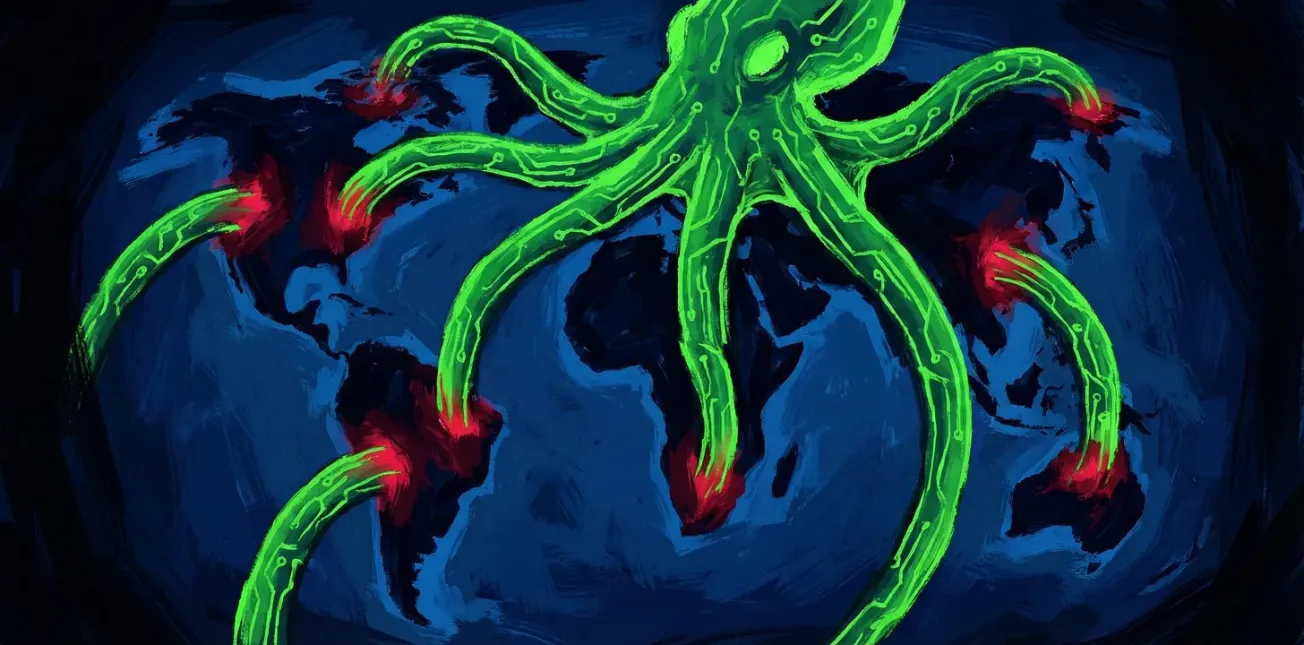Table of Contents
Graham Adams
Graham Adams is a freelance editor, journalist and columnist. He lives on Auckland’s North Shore. This article was first published at The Platform.
Twenty years on, judges are quietly awarding coastal rights to iwi.
Early this month, an hour-long documentary was released by TVNZ to mark the 20th anniversary of the land-rights march to oppose Helen Clark’s Foreshore and Seabed Act. The account of 2004’s hikoi from Cape Reinga to Wellington — narrated by Tamati Rimene-Sprout, who marched as a 10-year-old — is undeniably atmospheric and will certainly be rousing for those who support Maori nationalism.
For others, Hikoi: Speaking Our Truth will look like the opening salvo in a propaganda campaign to head off attempts by the government to amend the Marine and Coastal Area (Takutai Moana) Act 2011, which repealed Clark’s legislation.
Hikoi cuts between coverage of the thousands of marchers making their way from Cape Reinga to the capital and interviews with influential activists and politicians — including Hone Harawira, Tame Iti, Ken Mair and Tariana Turia. They were bitterly opposed to the Labour-led government restricting Maori access to the courts after the Court of Appeal ruled in 2003 that iwi had the right to test customary ownership to areas of the foreshore and seabed in the Maori Land Court.
The case that led to the Court of Appeal decision was brought by eight South Island iwi who were pursuing a claim for customary title of the Marlborough foreshore and seabed. If it had succeeded, it could have granted them private title and exclusive access.
The hikoi marchers were dedicated to the idea that Maori owned the entire foreshore and seabed. Such ownership would, of course, hand iwi immense power — including the right to control access to it as well as staggering financial windfalls from commercial activities, including marine farming and mining. The documentary never spells this out but rather depicts Maori as selfless and spiritual “guardians” of the coast, who were the victims of a massive land confiscation by Clark’s government.
It is never mentioned that her Foreshore and Seabed Act allowed iwi and hapu to apply to the courts for recognition of customary rights in coastal areas where substantially uninterrupted, or continuous, possession and exclusive use from 1840 could be established. A successful claim would allow a form of “guardianship” over a foreshore and seabed reserve.
Without that knowledge, it is impossible to understand National’s very successful — and contentious — “Iwi/Kiwi” billboard advertising campaign for the 2005 General election that portrayed Helen Clark as sympathetic to Maori activists and willing to cede control of the nation’s beaches that would undermine the public’s right to unfettered access.
Nowhere in the documentary is it mentioned that, by New Zealand importing England’s common law, ownership of the foreshore and seabed had long been viewed as having rested with the Crown from 1840. Clark decided to make that explicit in statute.
In fact, a 1963 Court of Appeal case over Ninety Mile Beach had decided that all customary title had been extinguished. In overturning that forty-year-old decision, the 2003 Court of Appeal judgment came as a bombshell in finding that Maori customary rights to the foreshore and seabed persisted until they were explicitly extinguished by law. Which the Foreshore and Seabed Act did.
The documentary — funded by state agency Te Mangai Paho to the tune of $369,000 — everywhere promotes the view that the land march was indisputably a righteous cause, even though its claims were largely based on a hotly contested interpretation of Article Two of the Treaty of Waitangi.
Towards the end of the programme, it is noted that the Foreshore and Seabed Act was repealed by the Marine and Coastal Area Act — passed by John Key’s National-led government in coalition with the Maori Party in 2011. The only comment Rimene-Sprout makes about the Act — known as MACA — is that it “still fails to deal with the underlying issues: ‘Who owns the foreshore and seabed?’”
It is true that MACA bizarrely asserts that no one, neither the Crown nor Maori, owns it. However, there is no mention that — twenty years after the hikoi — activist judges are adopting a contentious interpretation of MACA that enables them to readily recognise Customary Marine Title and Protected Customary Rights over specific areas of the coast.
Critics say that process will eventually mean nearly all of New Zealand’s coastline and sea as far out as 12 nautical miles will be subject to a significant degree of Maori control that includes important attributes of ownership. In short, the courts are now effectively fulfilling many of the wishes of 2004’s hikoi protesters.
For completeness, the documentary’s makers owed its audience some acknowledgement that this judicial process is in train. At the very least, there should have been a postscript stating customary marine title and rights have been recognised so far in areas including the eastern Bay of Plenty, part of Hawkes Bay and the southern Wairarapa — along with the fact that these are only the first of more than 500 applications covering the entire coastline that have been submitted to the High Court and / or directly to the Crown for negotiation.
The vast majority of New Zealanders will have no knowledge of the judgments that have already been delivered, nor of the hundreds of claims waiting in the wings for the attention of the courts or the minister. While individual cases have received some coverage in the legacy media, the reports have been largely technical and legalistic with their implications opaque to most people.
Under MACA, iwi and hapu whose claims are accepted by the courts will have the right to be involved in coastal planning and policy development, including vetoing resource consents in an area from the high-tide mark to as far as 12 nautical miles out to sea. This will affect anyone wanting to set up fish farms, marinas, offshore wind turbines or to build new wharves.
Iwi will also be able to charge commercial operators in their designated area — such as inshore fisheries — a fee. And although the government will continue to own nationalised minerals and resources — gold, silver, uranium and petroleum — other valuable commodities such as rare earth elements will belong to tribal groups to mine or sell.
The court judgments are effectively hidden in plain sight — and no one in the legacy media appears keen to alert the public to their implications. Among them, the question of open access to beaches remains an issue. While free access is generally guaranteed to individuals under MACA, iwi can nevertheless shut off parts of the coastline to the public through provisions for Wahi tapu (areas of spiritual significance).
At the beginning of May, Justice Helen Cull released her judgment recognising the customary title and rights of two hapu in Tokomaru Bay, which lies 90km north of Gisborne. One hapu requested blanket wahi tapu protection for the entire area they were claiming (extending to the Territorial Sea Boundary, 12 nautical miles offshore) as well as specifying 117 “sites of significance” (presumably as a fallback position).
The judge declined to grant wahi tapu status to the entire area (while admitting that was a possibility under the legislation) and selected 10 sites that “may be capable of being considered wahi tapu” under the terms of MACA. These included the “home of the kaitiaki Te Kekeno”, who live “at a place called Kopuanui”. Kekeno are seals.
The scope of hapu ambitions for the area is clear. And the legislation allows claimants to later apply to vary their agreement.
Furthermore, the judge noted: “The non-inclusion of wahi tapu in a [Customary Marine Title] order does not preclude the hapu from seeking recognition and protection of wahi tapu under the RMA, the Heritage Act or Te Ture Whenua Maori Act. Thus, any sites which do not fall within the common marine and coastal area, or have not met the evidential test for recognition under MACA, may be recognised under the alternative legislative enactments.”
MACA gives Customary Marine Title groups the right to appoint wardens who can “warn a person to leave a wahi tapu or wahi tapu area” and take their name, contact details, and date of birth if the warden “has reason to believe [they are] intentionally failing to comply with a prohibition or restriction”. Breaches can attract fines of up to $5000.
Given that members of the public trespassing in a wahi tapu area may incur criminal penalties, and wahi tapu conditions may affect the exercise of fishing rights, Justice Cull encouraged the two hapu to more clearly specify the areas they were seeking to be covered by a protection order and the reasons for their requests in advance of “Stage Two of these proceedings”.
A sequel to Hikoi spelling out the ramifications of the court decisions, and what is at stake for the general public, would undoubtedly create a political storm. As would the fact that judges have ignored the plain meaning of Section 58 of MACA — which the public was assured would severely limit the possibility of granting customary rights by requiring an applicant group to show it had “[held] the specified area in accordance with tikanga; and has, in relation to the specified area, exclusively used and occupied it from 1840 to the present day without substantial interruption”.
Instead, judges have decided that taking the second leg of Section 58 at face value, with its emphasis on exclusivity and continuity since 1840, would be contrary to the overall intent of MACA and inconsistent with Te Tiriti. And they have elevated the importance of tikanga — based on advice from pukenga (experts in Maori customs), some of whom may have an interest in the outcome of the court action — to open the door wide for customary title and rights.
Unfortunately, the chance of state media agencies like Te Mangai Paho or NZ on Air funding a documentary that would spell out to the public exactly how activist judges are currently dispensing rights to the foreshore and seabed is vanishingly small.









